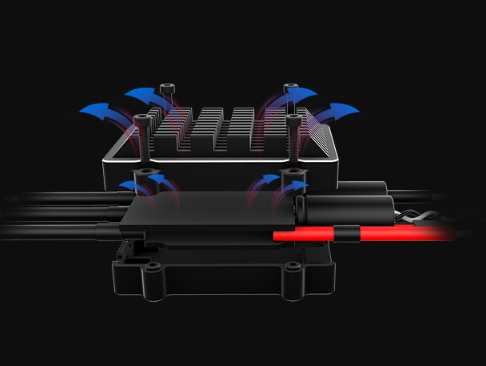Electronic Speed Controller (ESC): Unleashing the Power of Precision Control
In the realm of electronics and robotics, precision and control are paramount. Whether you are a seasoned engineer or just a hobbyist, the Electronic Speed Controller (ESC) is an indispensable component that takes center stage. This article delves into the fascinating world of ESCs, shedding light on what they are, how they work, and their various applications.
Understanding the Basics of ESCs
Before we dive deeper, let's get acquainted with the fundamentals of Electronic Speed Controllers.
What is an ESC?
Electronic Speed Controllers, or ESCs, are compact electronic devices designed to regulate and control the speed of electric motors, primarily in RC (remote control) vehicles.
How do ESCs Work?
ESCs operate by adjusting the voltage and current supplied to the motor, allowing for precise control of speed and direction. They do so through a process known as pulse-width modulation (PWM).
The Inner Workings of ESCs
To truly grasp the significance of ESCs, it's crucial to explore the intricate details of their functioning.
PWM and ESCs
The Pulse-Width Modulation technique employed by ESCs involves rapidly switching the power on and off, altering the average voltage supplied to the motor. This method allows for varying motor speeds with exceptional accuracy.
ESC and Brushed vs. Brushless Motors
ESCs cater to both brushed and brushless motors. Understanding the distinctions between the two and how ESCs interact with each type is essential for optimal performance.
Applications of ESCs
ESCs have far-reaching applications, extending beyond the world of RC vehicles. Let's explore some of the key areas where ESCs play a pivotal role.
1. Remote Control Vehicles
In the realm of RC cars, drones, and boats, ESCs ensure precise control over speed and direction, offering enthusiasts an exhilarating experience.
2. Robotics
In the field of robotics, ESCs enable robotic arms and mechanisms to execute intricate tasks with surgical precision.
3. Industrial Automation
ESCs are integral in manufacturing, where they regulate conveyor belts, assembly line machines, and other equipment, enhancing productivity and safety.
4. Electric Skateboards and E-Bikes
ESCs have revolutionized personal transportation, providing smooth acceleration and braking control to electric skateboards and bicycles.
The ESC Market: What to Look For
When choosing an ESC for your specific needs, several factors come into play.
Voltage and Current Ratings
Understanding the voltage and current requirements of your motor is paramount to selecting the right ESC.
Programming Options
Some ESCs offer advanced programming features, allowing users to fine-tune settings for optimal performance.
Size and Form Factor
Consider the physical dimensions of the ESC, ensuring it fits seamlessly into your project.
Advancements and Future Trends
As technology evolves, T-MOTOR ESC continue to advance as well. With the advent of IoT (Internet of Things), wireless connectivity, and AI, ESCs are becoming smarter and more versatile.
In conclusion, Electronic Speed Controllers (ESCs) are the unsung heroes of precision control in the world of electronics, robotics, and beyond. Their ability to fine-tune the speed and direction of motors has opened up endless possibilities, making them an essential tool for enthusiasts and professionals alike.
FAQs
What is the primary function of an ESC?
An ESC's primary function is to regulate and control the speed of electric motors with precision.
Can ESCs be used in industrial applications?
Yes, ESCs are widely used in industrial automation to regulate various machines and equipment.
What is the difference between brushed and brushless motor ESCs?B
rushed motor ESCs are designed for traditional motors, while brushless motor ESCs are for more efficient and powerful motors.
How do I select the right ESC for my project?
To choose the right ESC, consider factors like voltage and current ratings, programming options, and physical size.
What is the future of ESC technology?
ESCs are evolving with the integration of IoT and AI, promising smarter and more versatile control solutions for the future.




